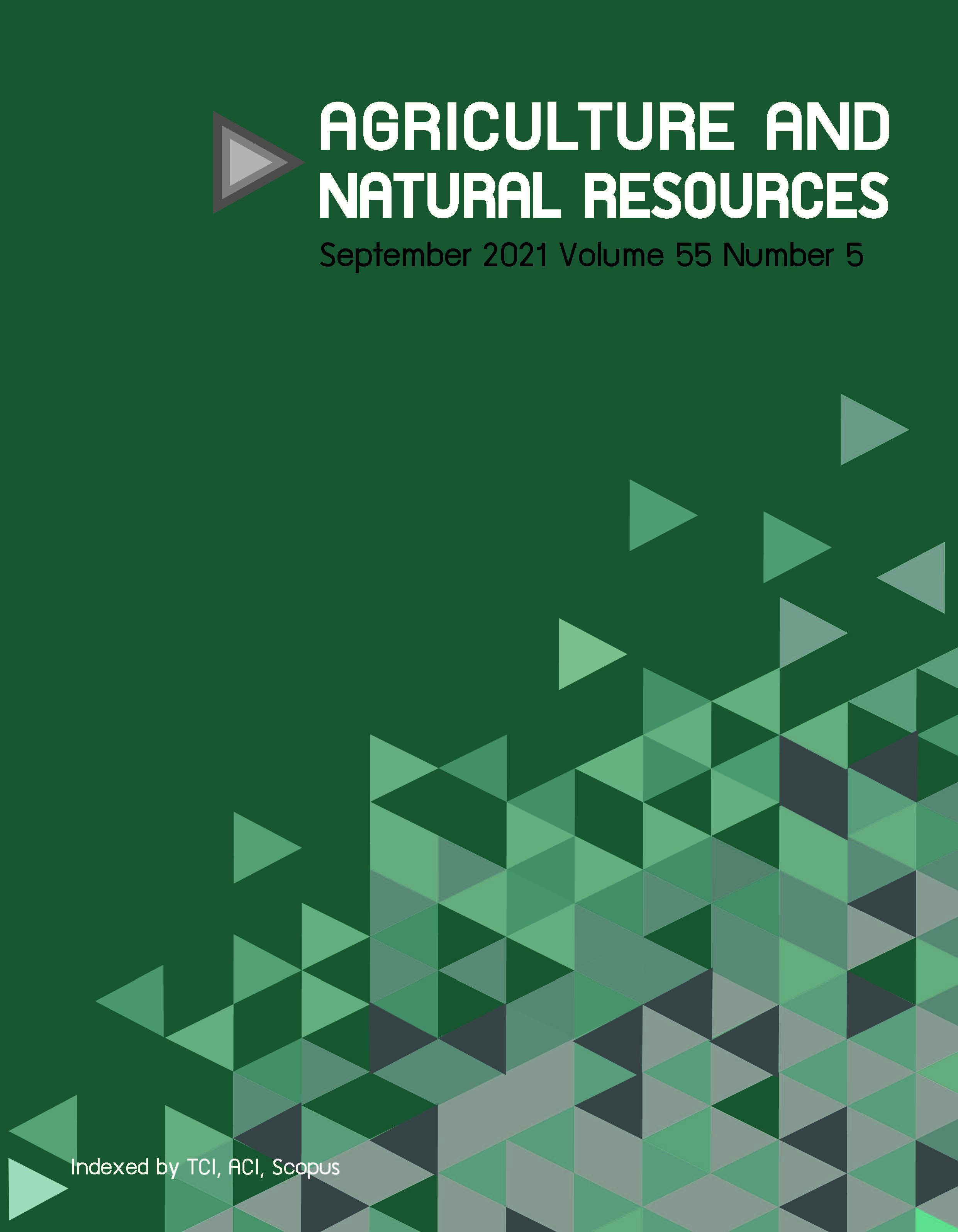Past, present and future habitat suitable for gaur (Bos gaurus) in Thailand
Keywords:
Distribution, Gaur, Large herbivore, Species distribution model, Wildlife managementAbstract
The gaur (Bos gaurus) distributes throughout mainland South and Southeast Asia. It is listed as an endangered species in Thailand, where its population has been decreasing and suitable habitat has been lost. This study explored the distribution of gaur in Thailand and assessed suitable gaur habitat in the past, present and future. Gaur occurrence data were obtained in 2010 and 2020 field surveys that recorded signs of gaur on wildlife trails and patrol routes in protected areas in Thailand. Maximum entropy was used to generate suitable habitat. The survey revealed gaur in 45 protected areas in 2010 and 59 protected areas in 2020. Although its range had expanded, suitable habitat had declined. The prediction of suitable areas for gaur showed that 10.0%, 7.7%, 8.0% and 8.2% of Thailand was suitable in the past, at present, and in the future based on models 1 and 2, respectively. By 2020, 31.8% of the suitable habitat in 2010 had been lost, while new suitable areas increased in extent by approximately 12.0%. Six potential forest zones for gaur conservation are the Western, Dong Phayayen-Khao Yai, Khlong Saeng-Khao Sok, Kaeng Krachan, Phu Khieo-Nam Nao and Eastern Forest Complexes. This study provided guidelines for gaur habitat management to maintain gaurs and their habitat in Thailand.
Downloads
Published
How to Cite
Issue
Section
License
Copyright (c) 2021 Kasetsart University

This work is licensed under a Creative Commons Attribution-NonCommercial-NoDerivatives 4.0 International License.
online 2452-316X print 2468-1458/Copyright © 2022. This is an open access article under the CC BY-NC-ND license (http://creativecommons.org/licenses/by-nc-nd/4.0/),
production and hosting by Kasetsart University of Research and Development Institute on behalf of Kasetsart University.







